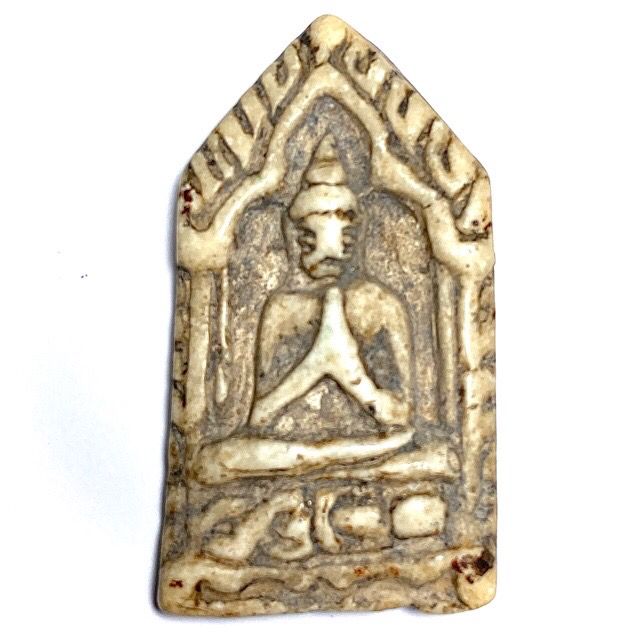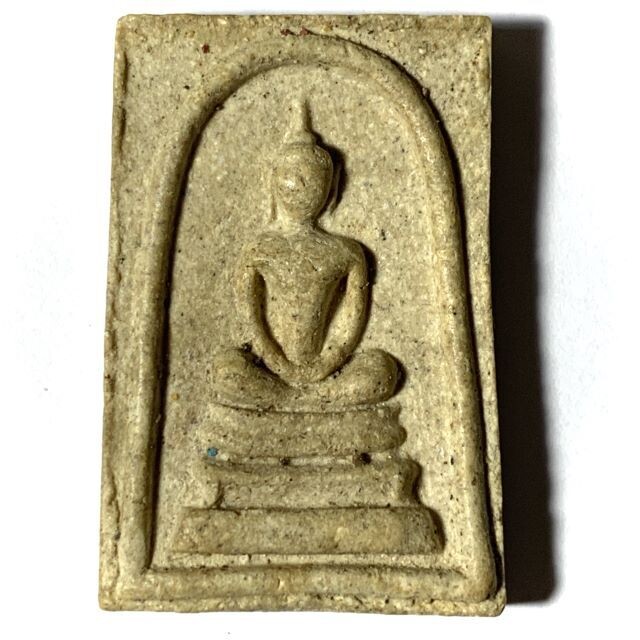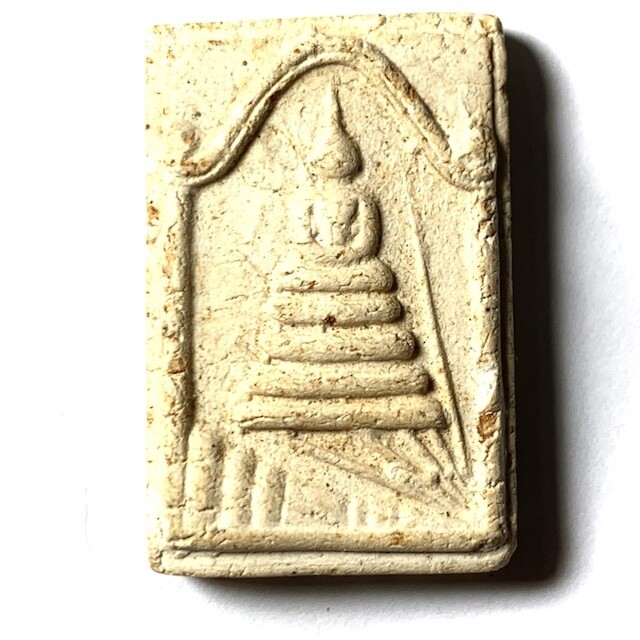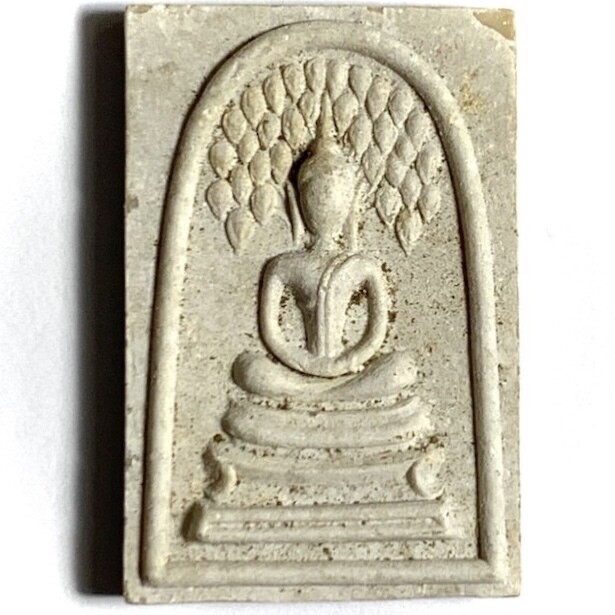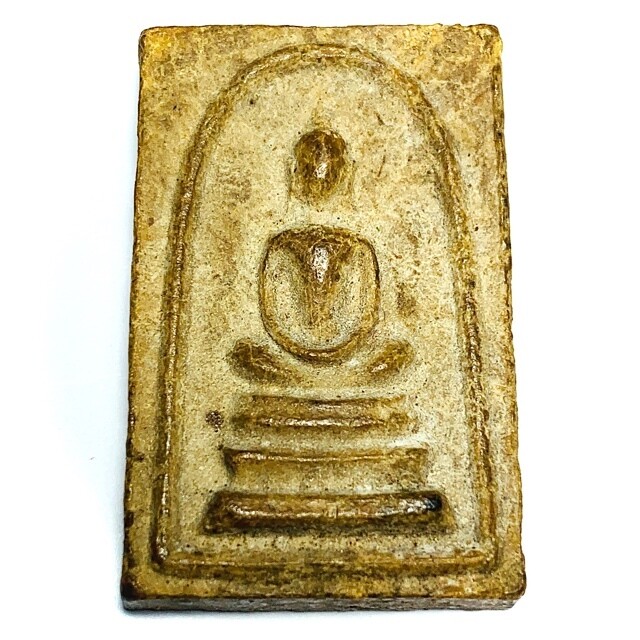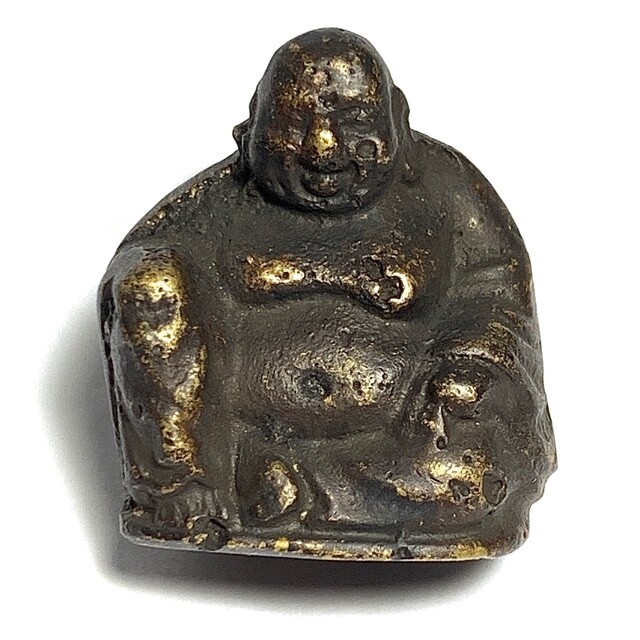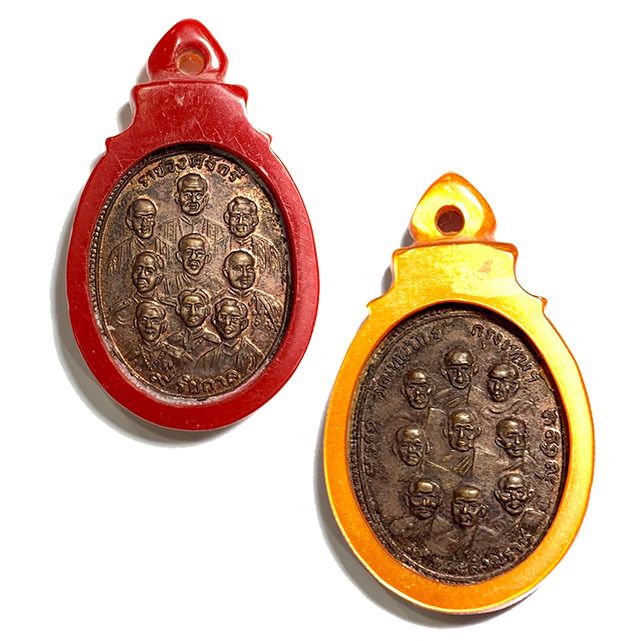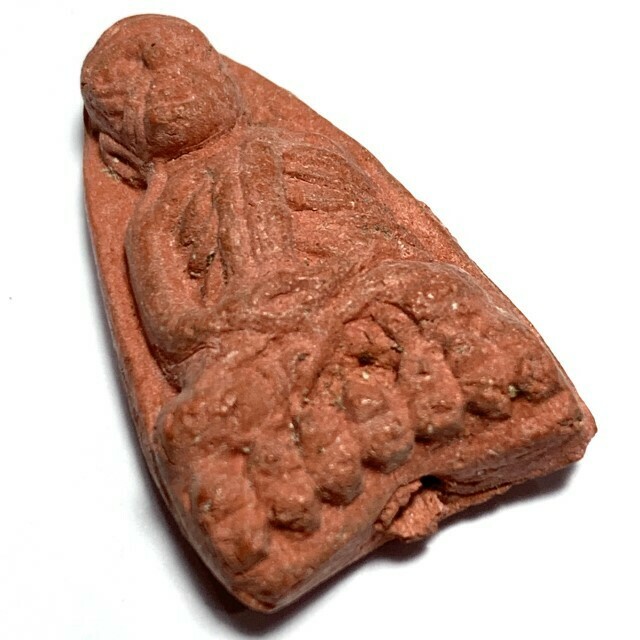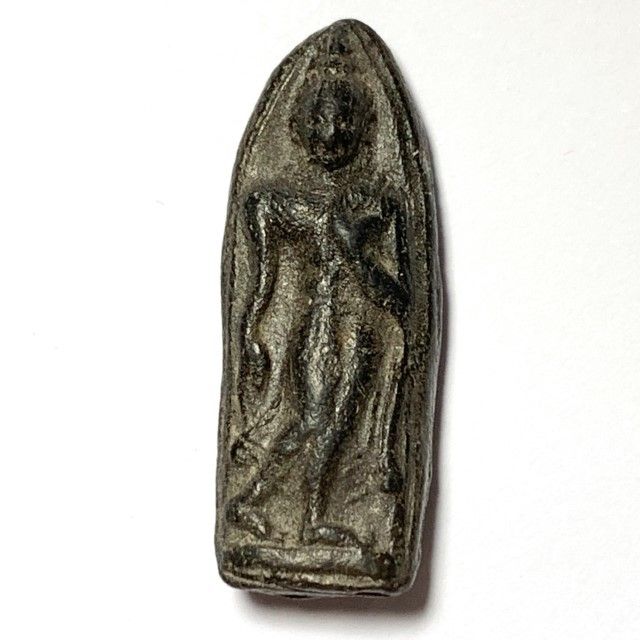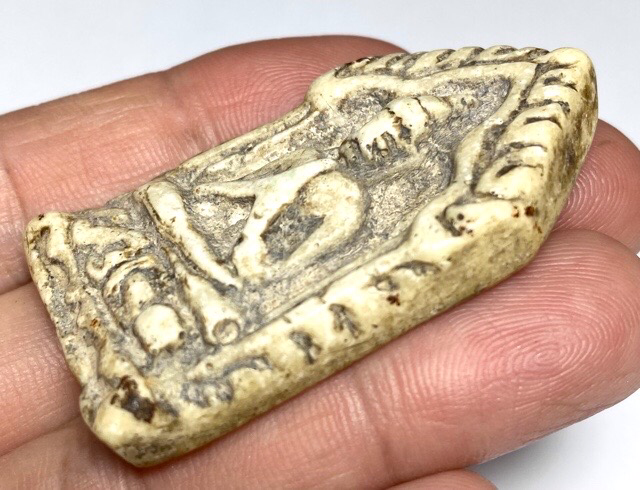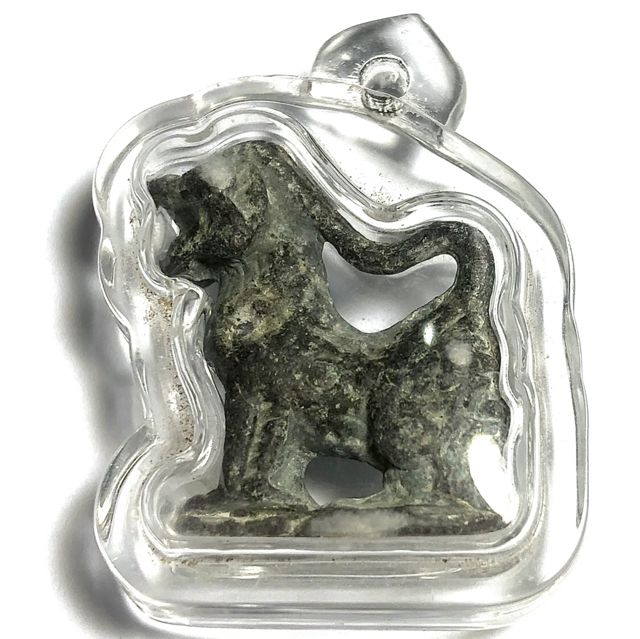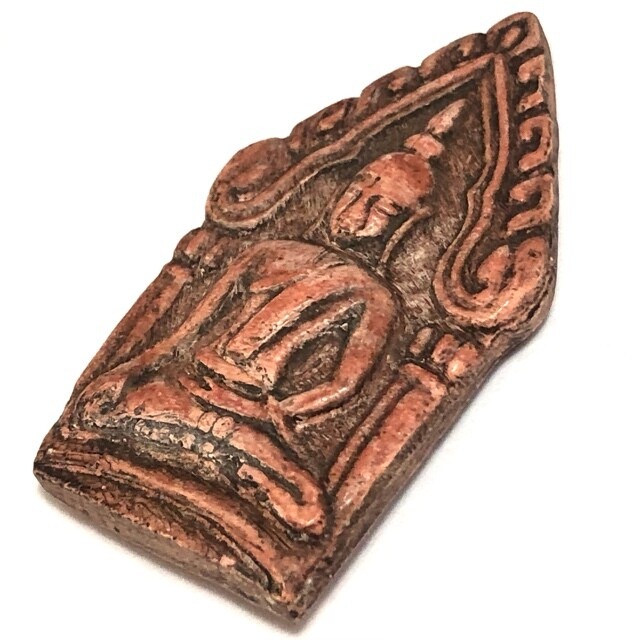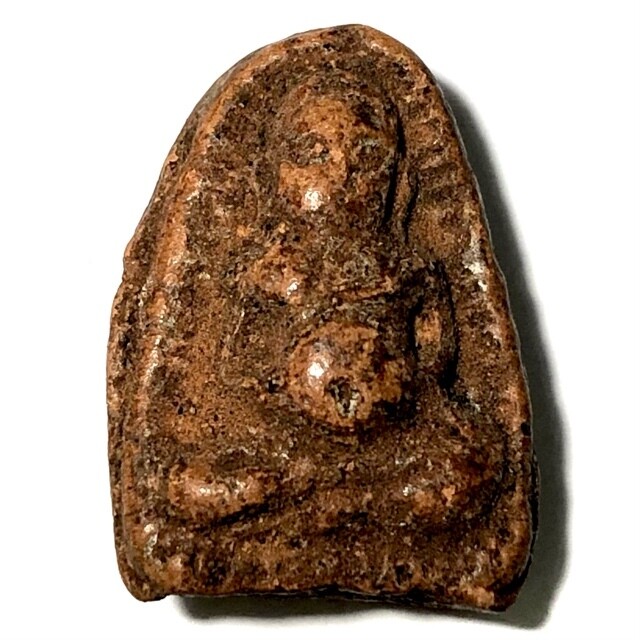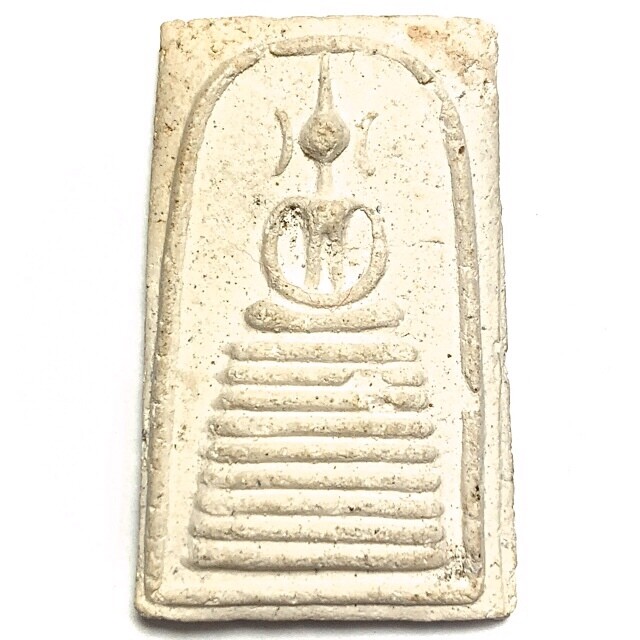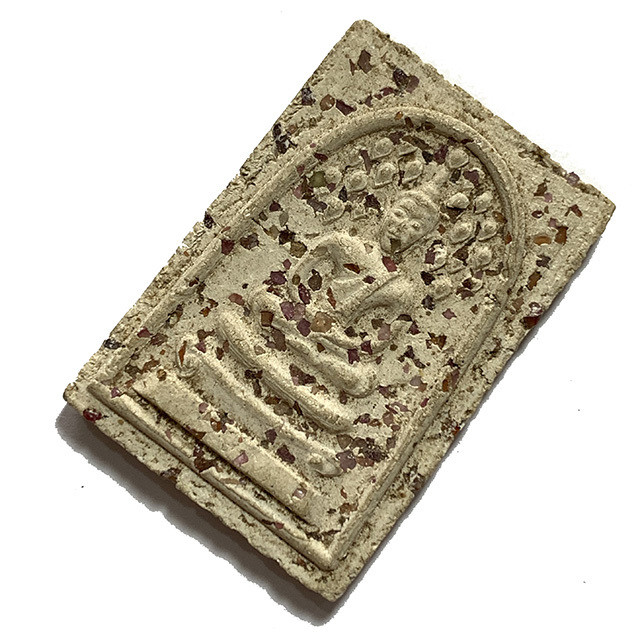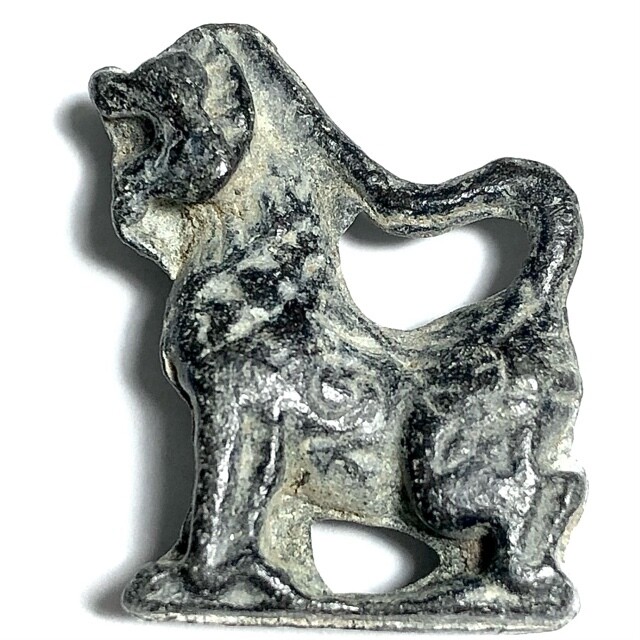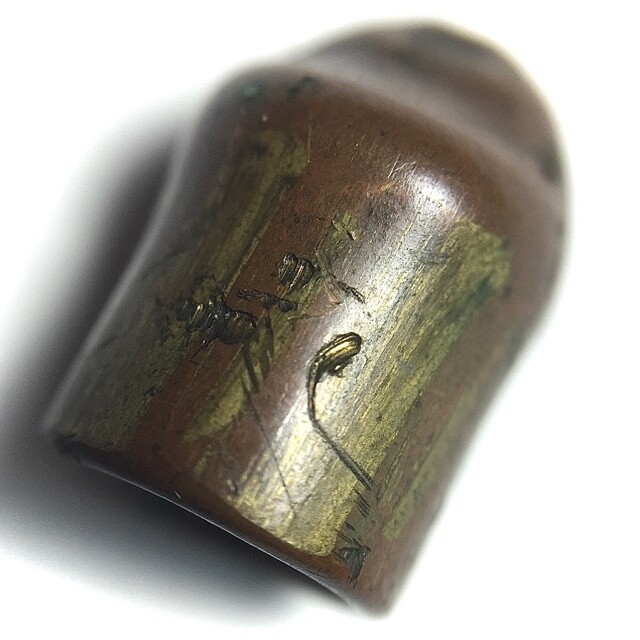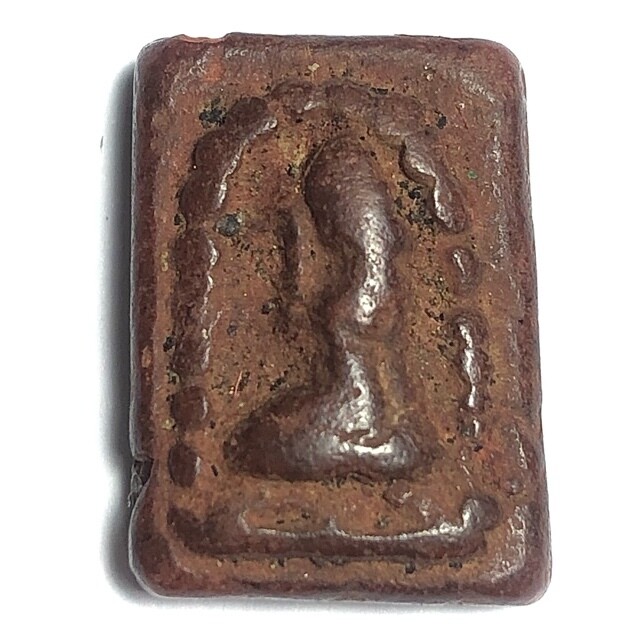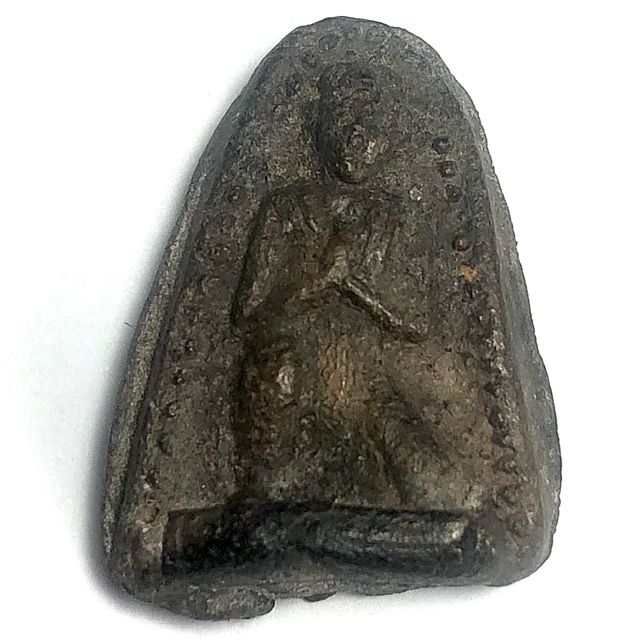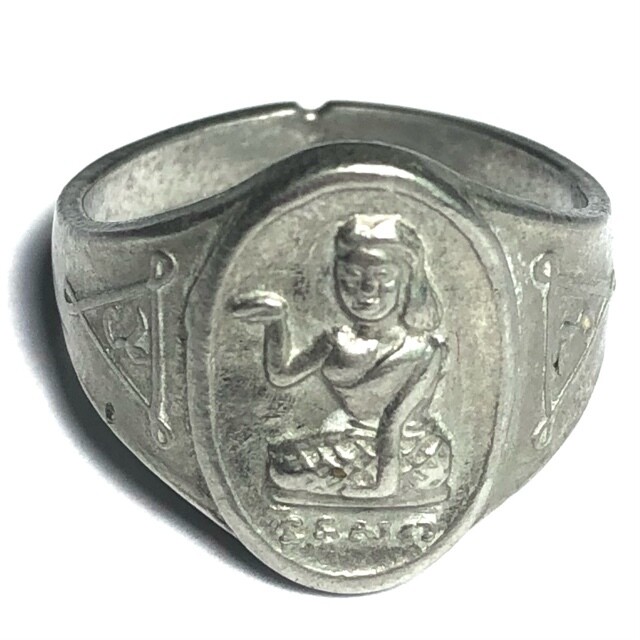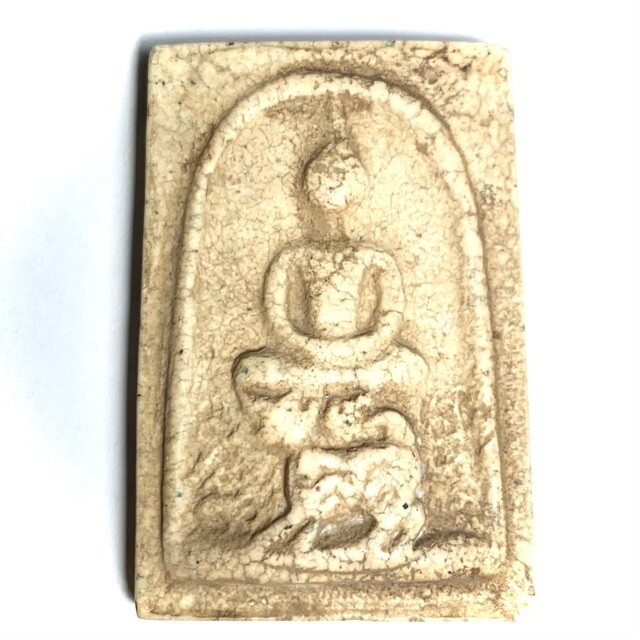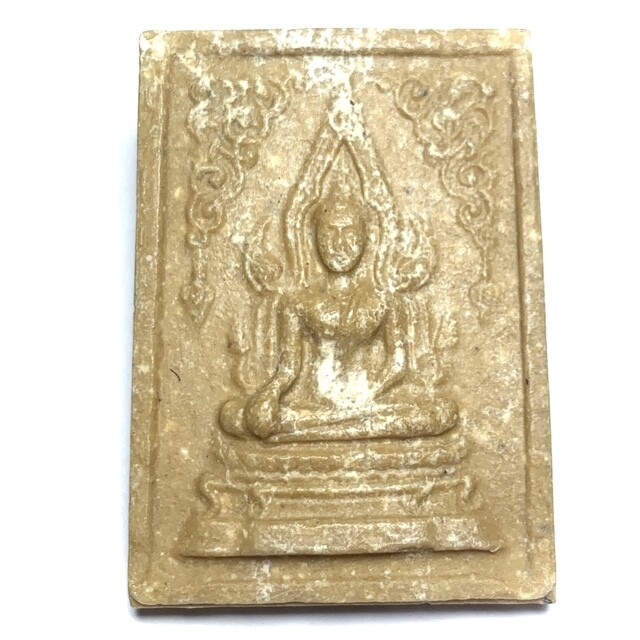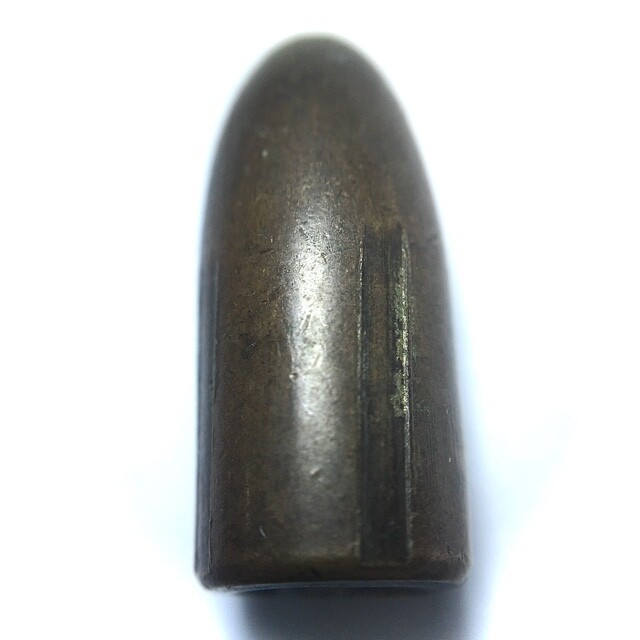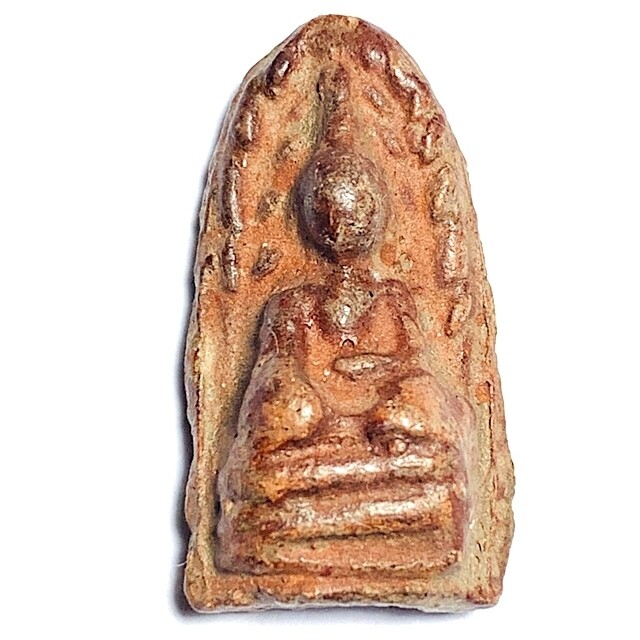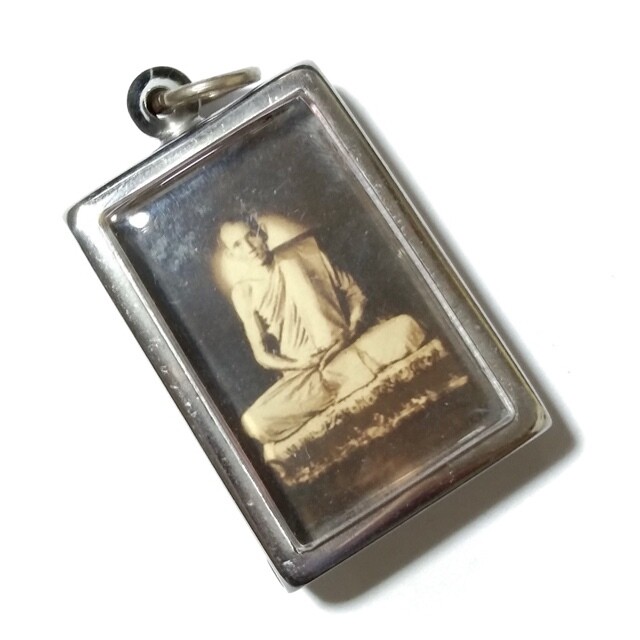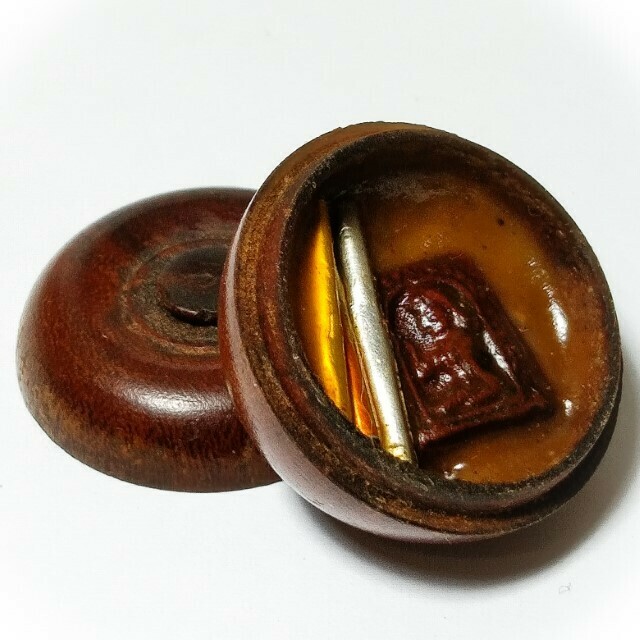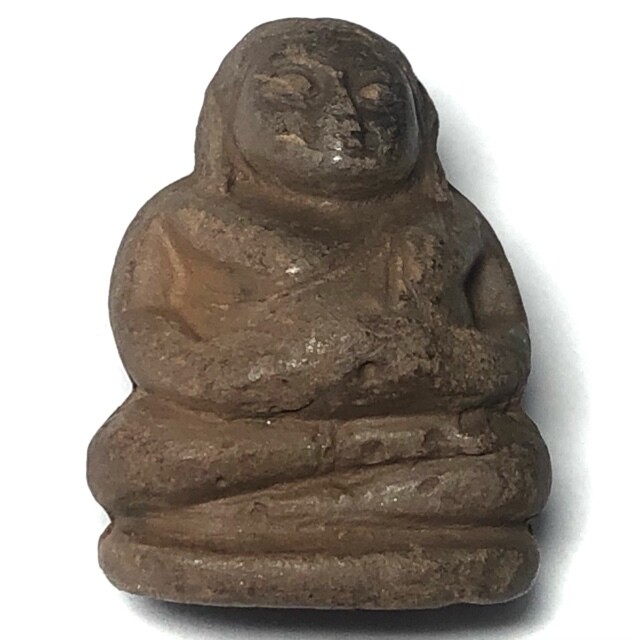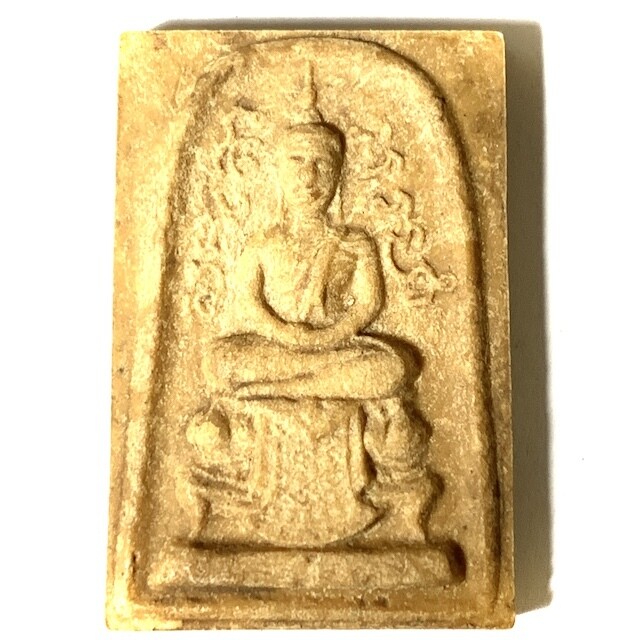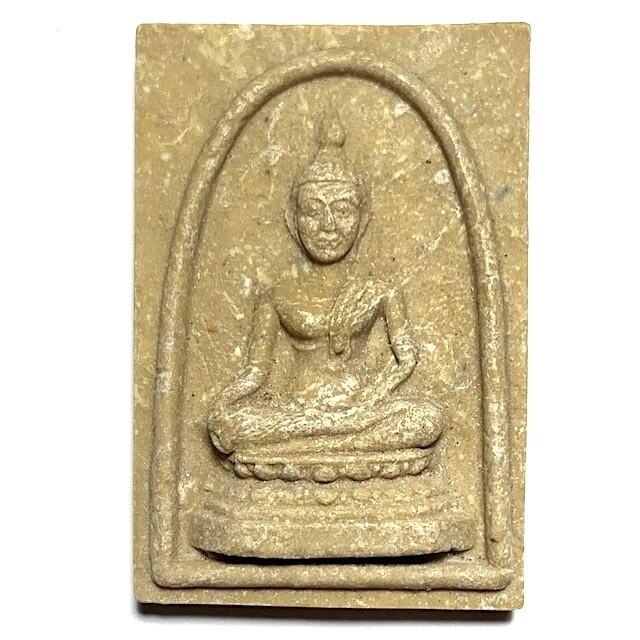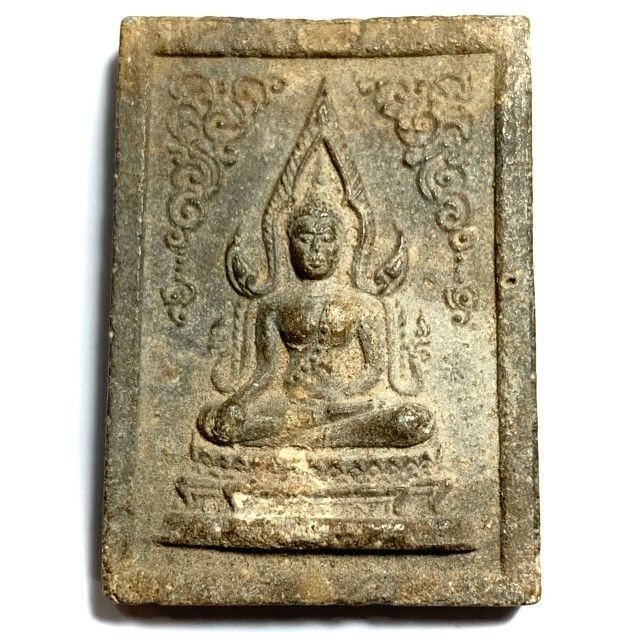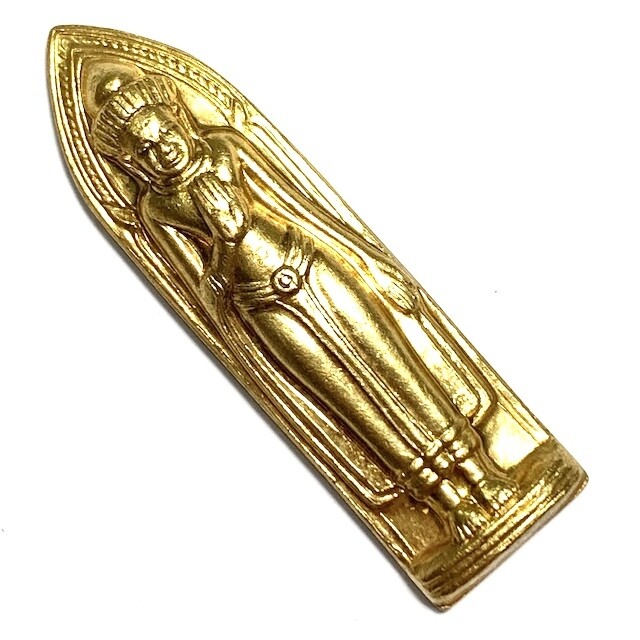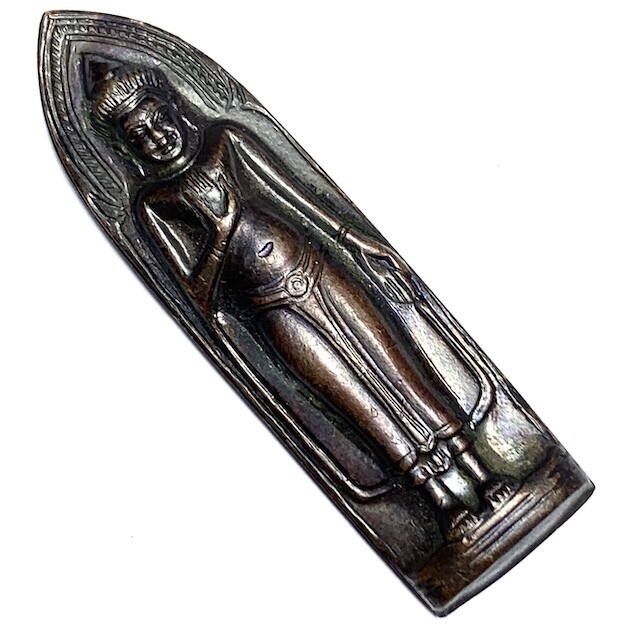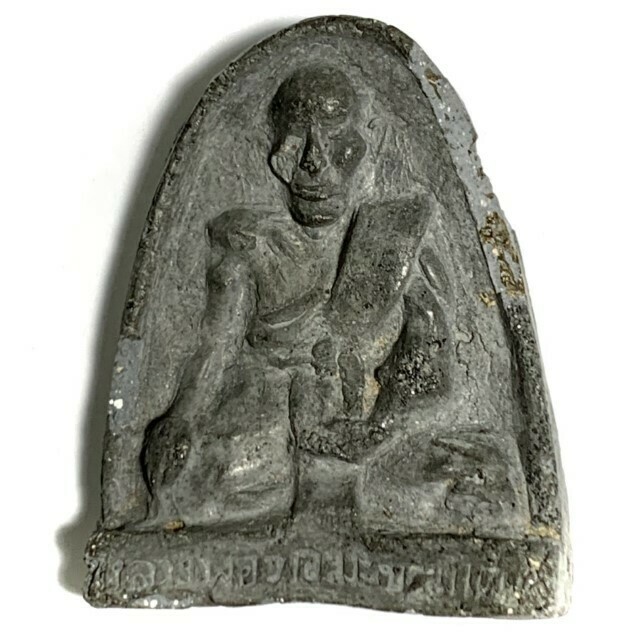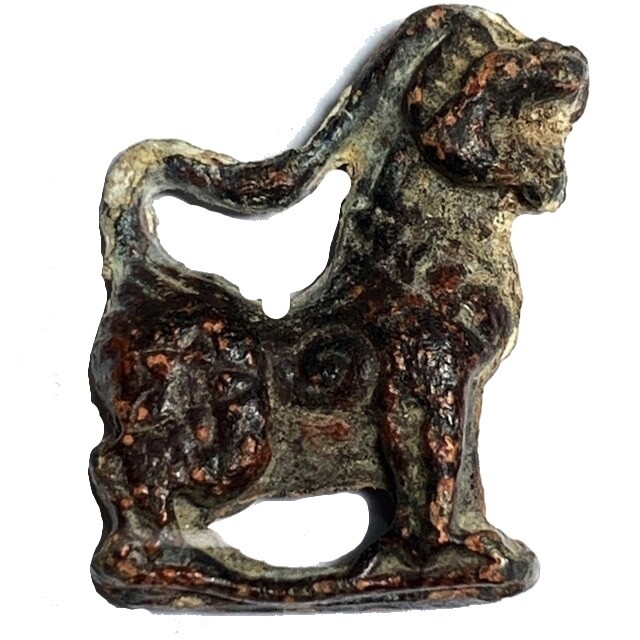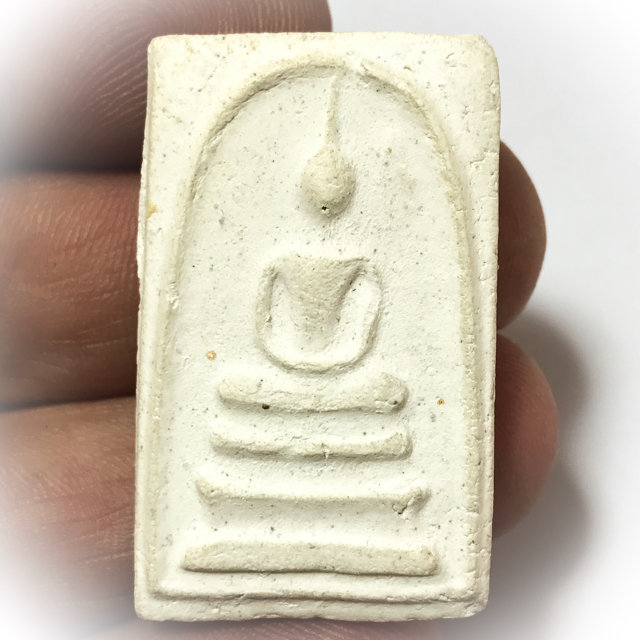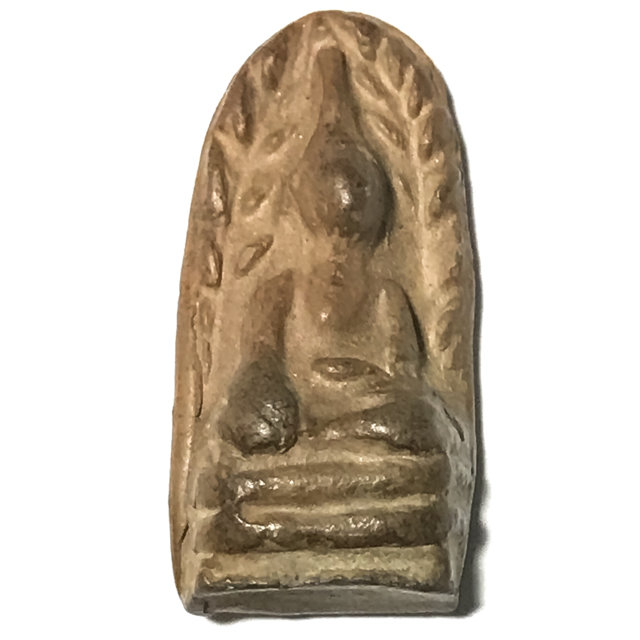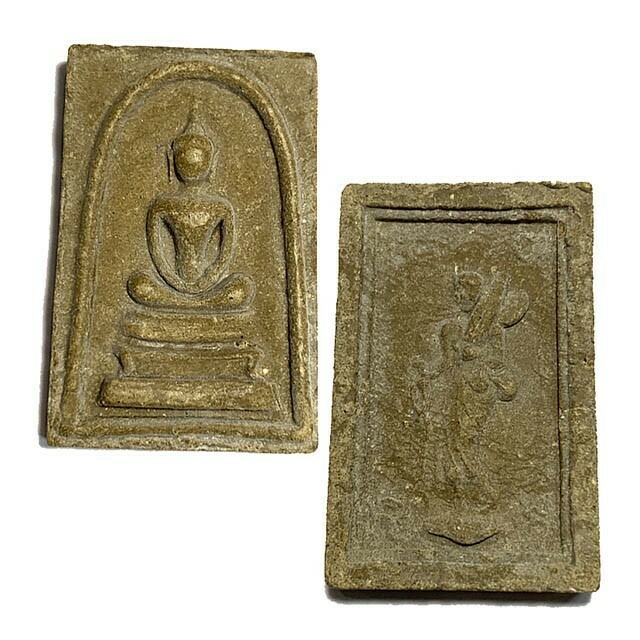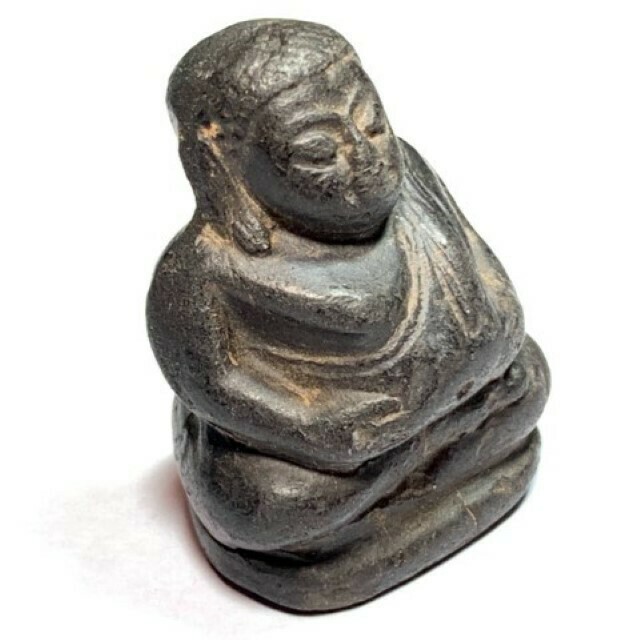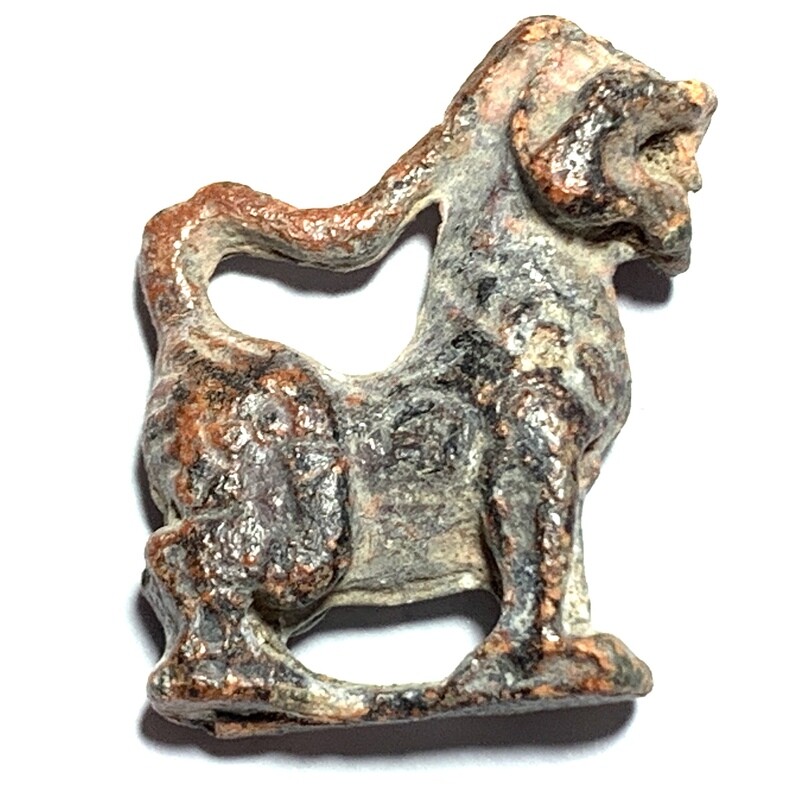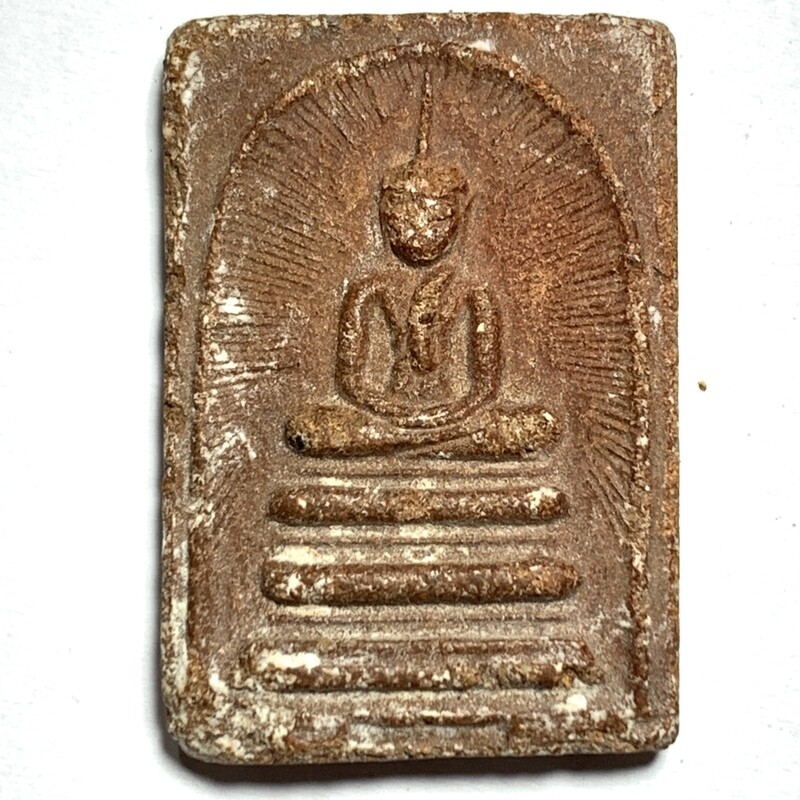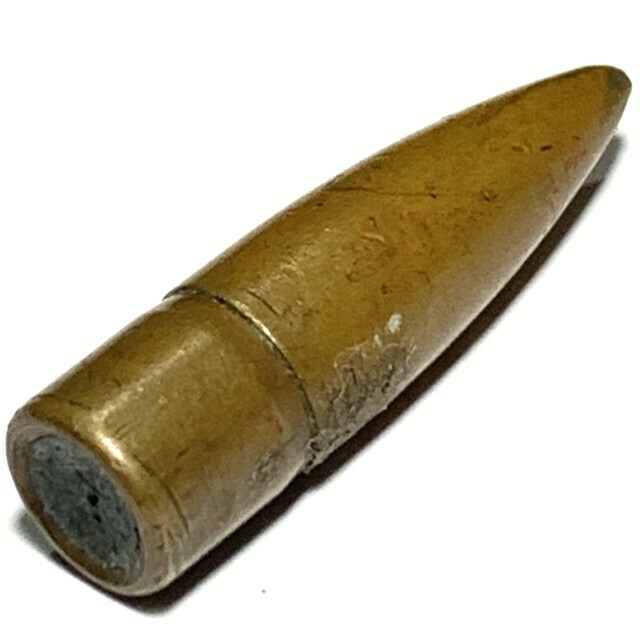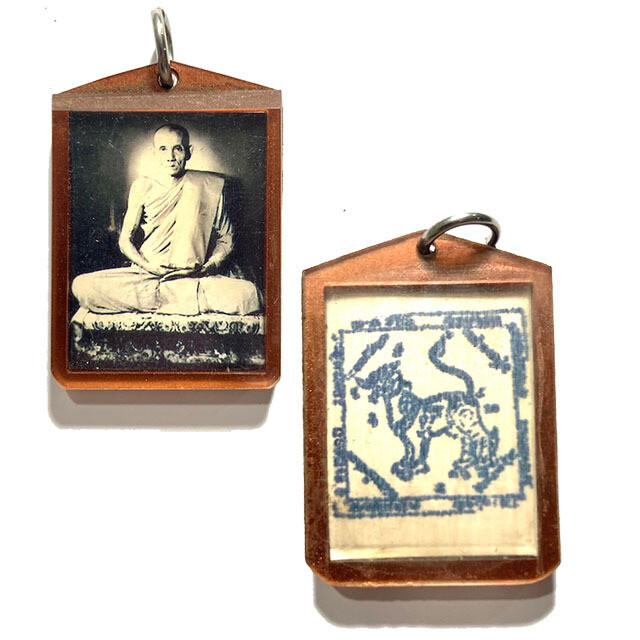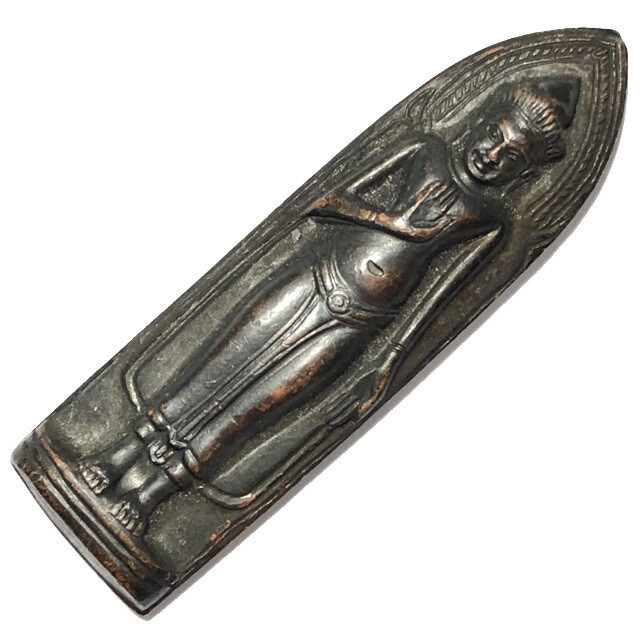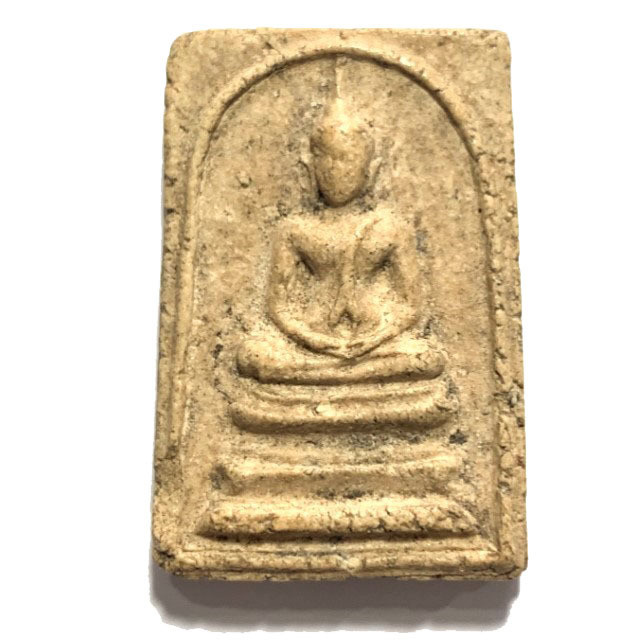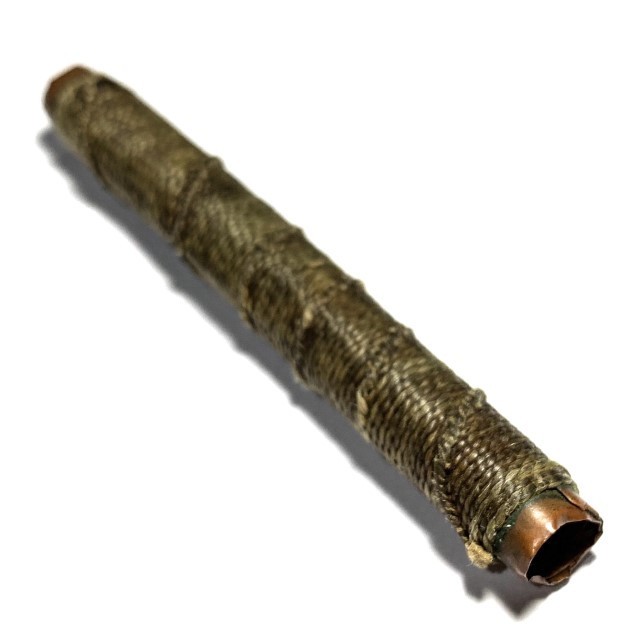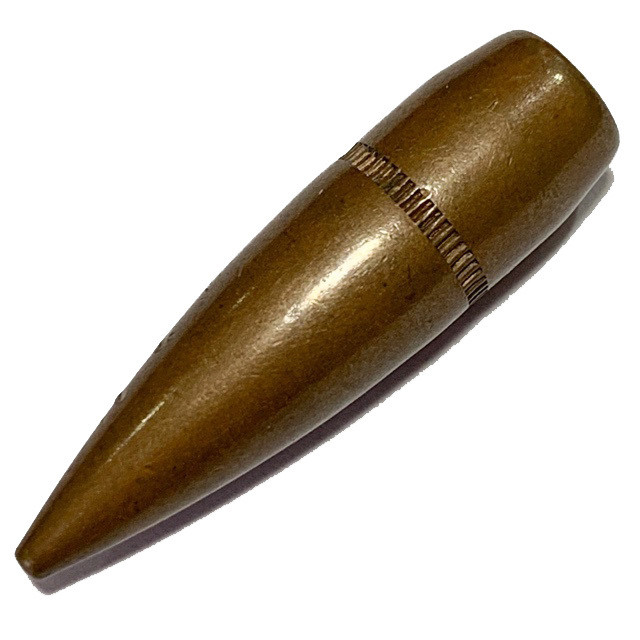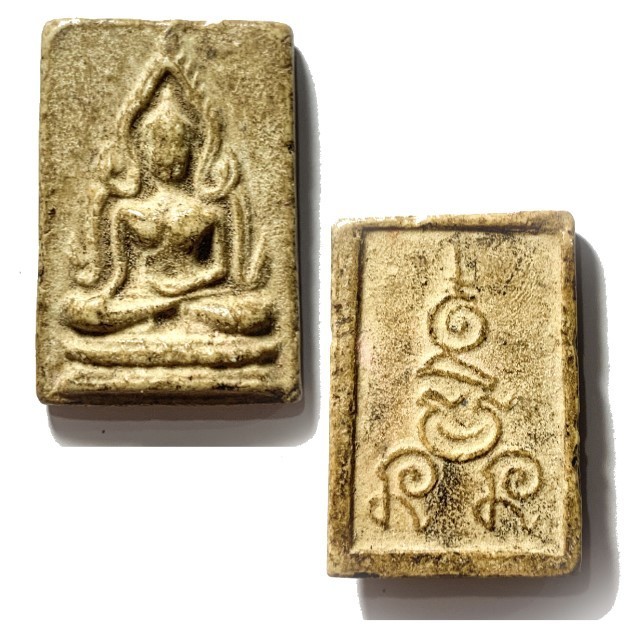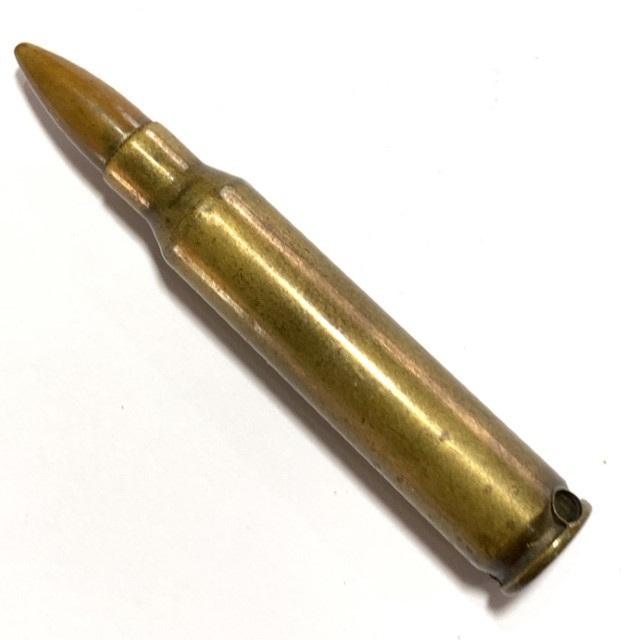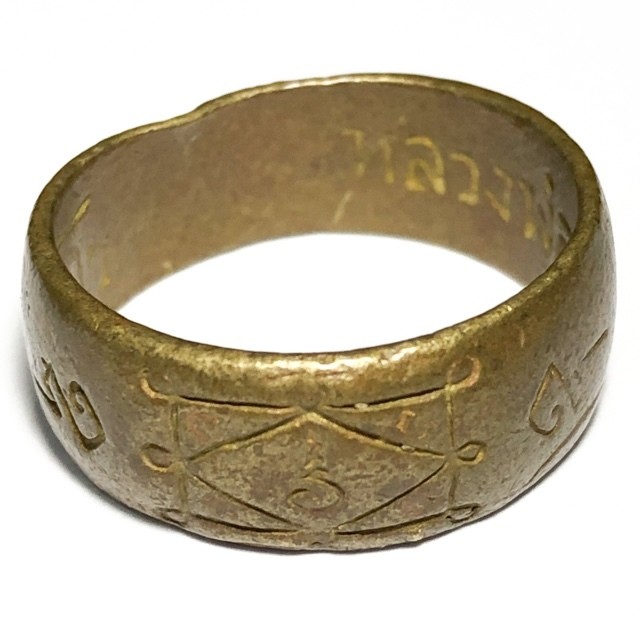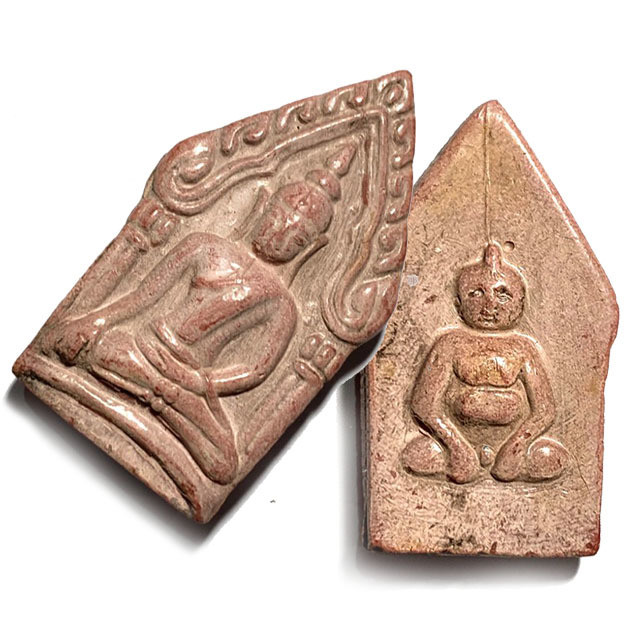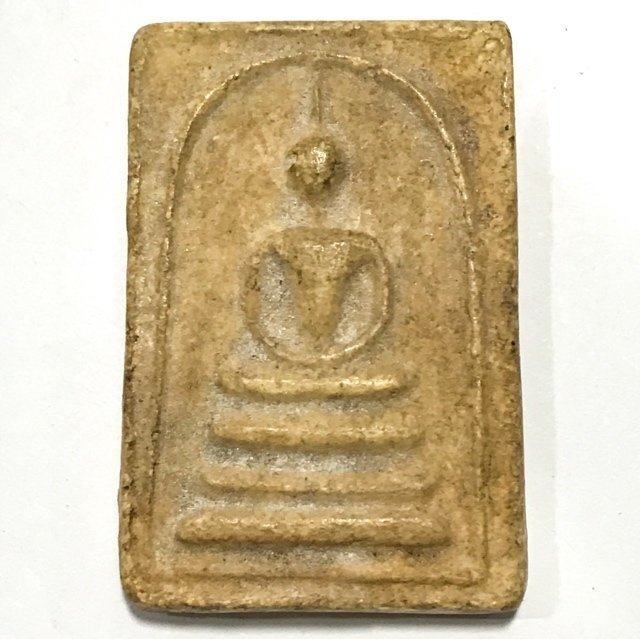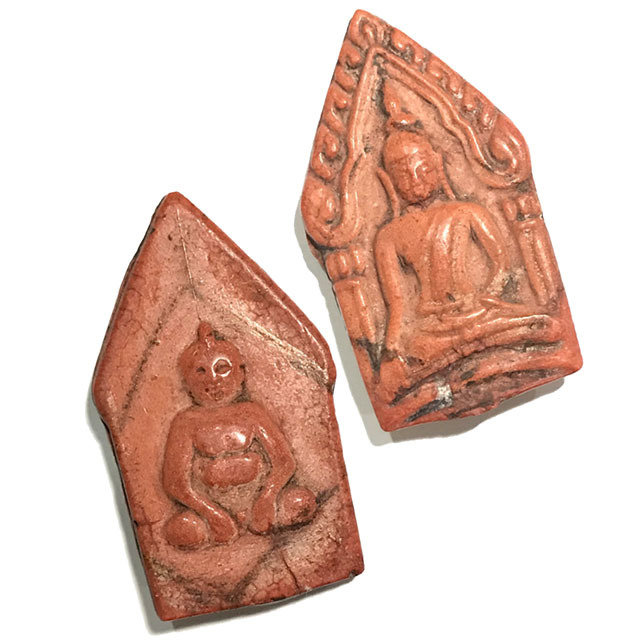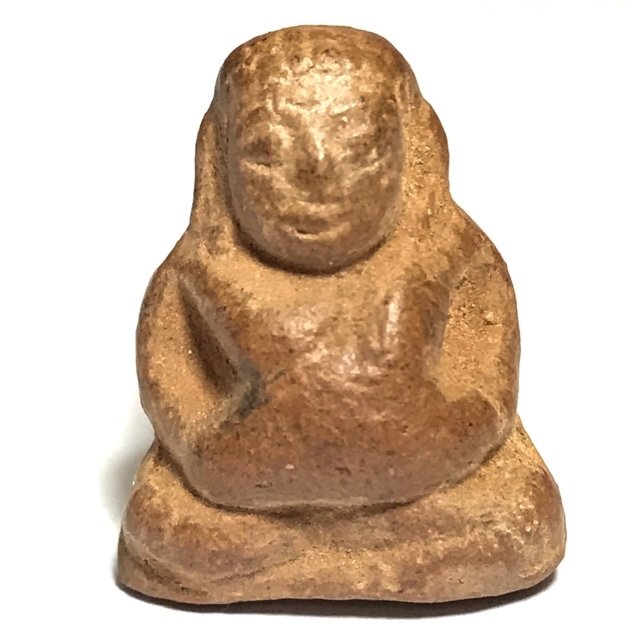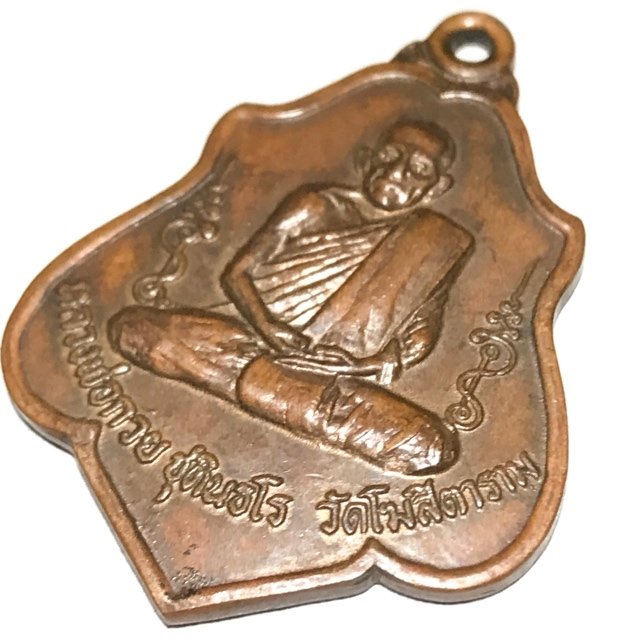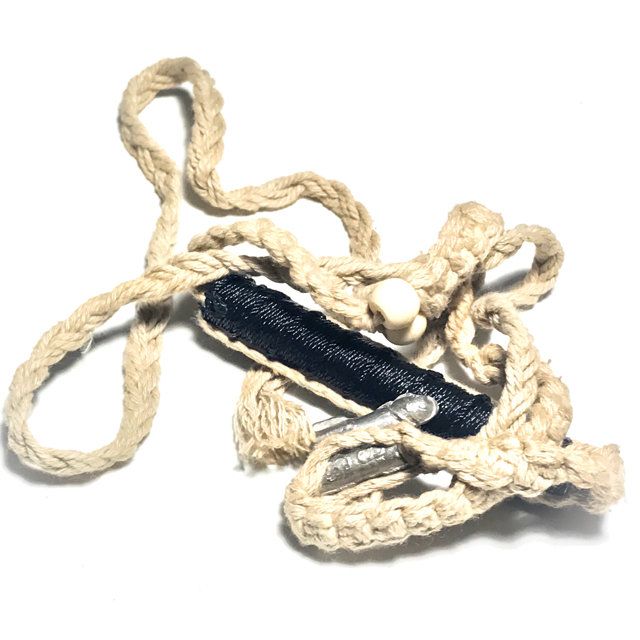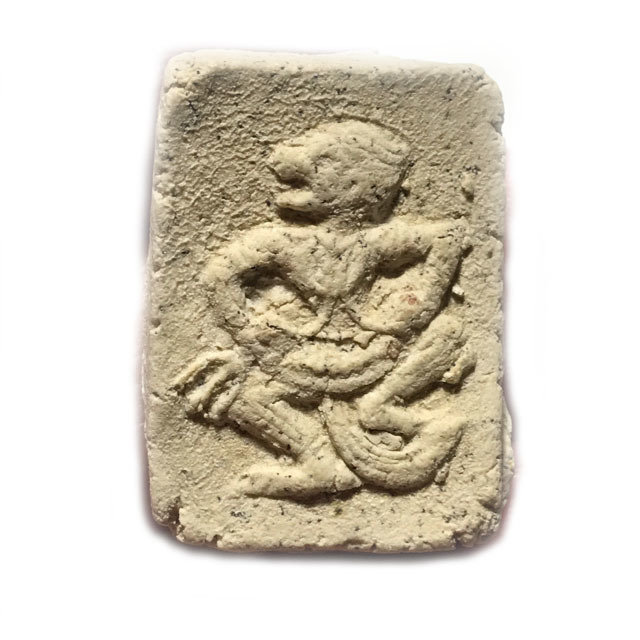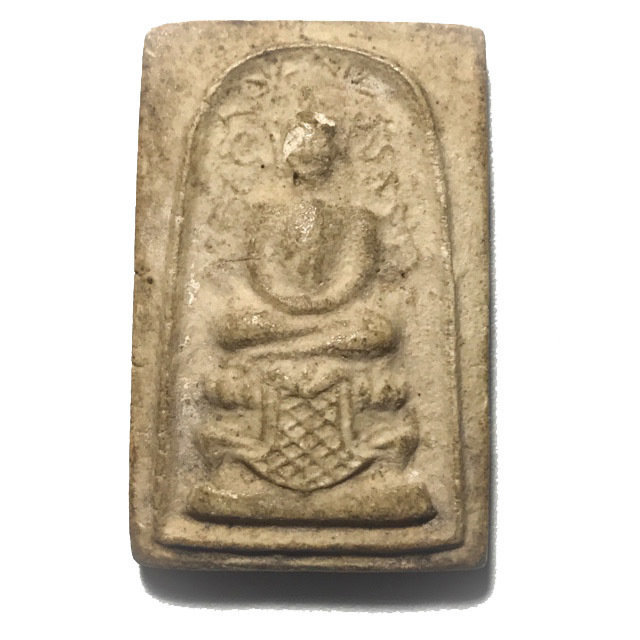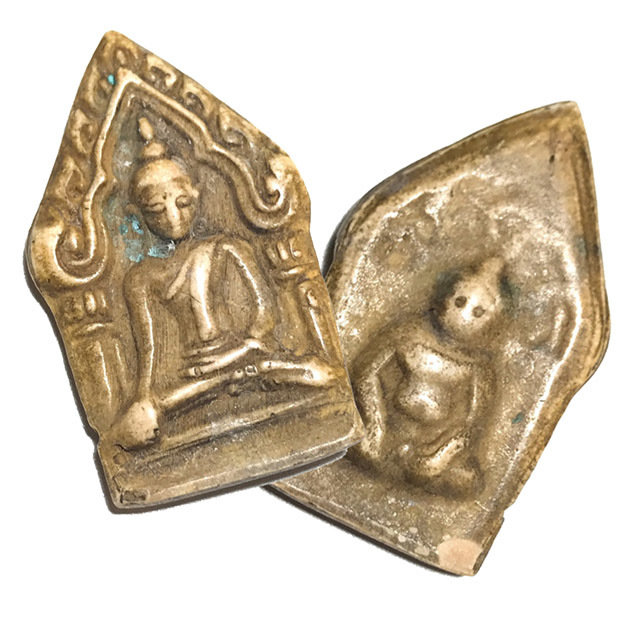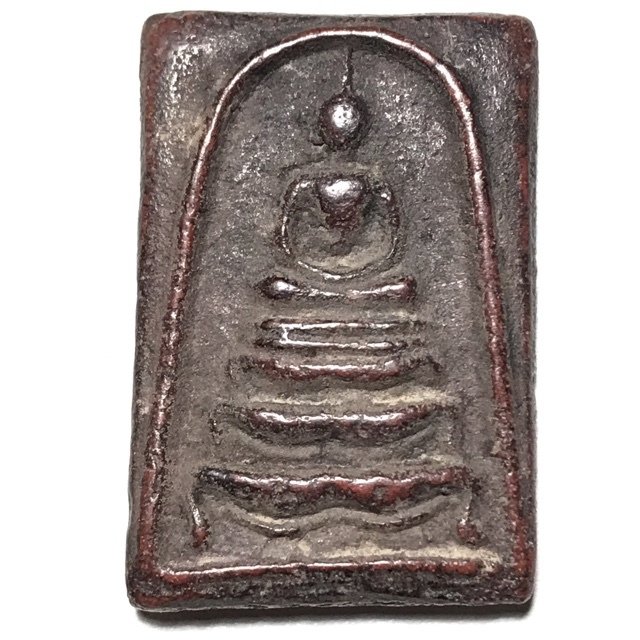The Khun Phaen Nang Kumarn Tong Votive Tablet by Luang Por Guay
The Khun Phaen Nang Kumarn Tong tablet occupies a unique place among the votives created by Luang Por Guay of Wat Kositaram. Fashioned in 2513 B.E. as part of the Run Prasopgarn (“Proved Powerful by Experience”) series, it is composed of Nuea Aathan, a sacral blend of consecrated earth, funerary ashes, powdered bone and Pong Wosed yantra powders. This smooth-backed Hlang Riab variant incorporates the necromantic image of a Hoeng Prai, or child-ghost beneath Khun Phaen’s throne, lending the model an unusual ritual potency within Luang Por Guay’s pantheon.
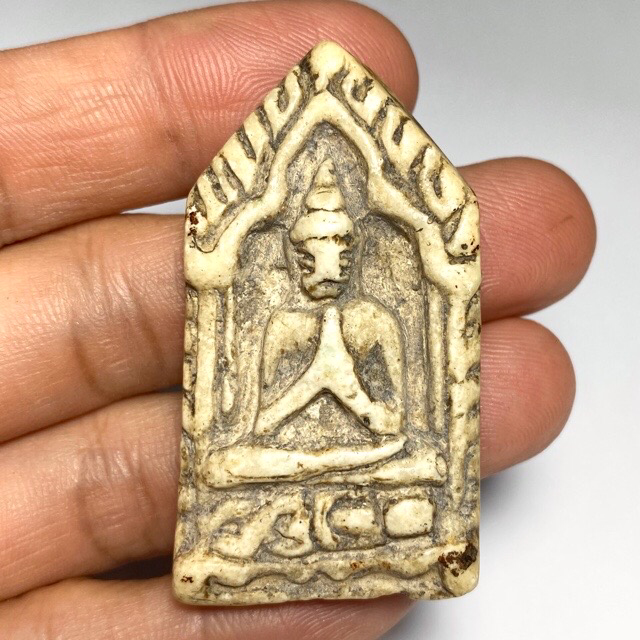
The tablet features the image the Buddha in the Mara Vichai posture, one with both hands placed together performing incantations. The figure is enclosed within a crystalline arch and bears elongated earlobes, a classical signifier of awakened wisdom. Beneath this scene rests the Kumarn Tong, the Golden Child Deva, depicted in youthful plenitude. The reverse may appear as an unadorned smooth surface or, in its alternate form, as a seated Kumarn Tong whose rounded belly and serene expression evoke prosperity and well-being.
These amulets were principally bestowed upon disciples who sought Sak Yant tattoos from Luang Por Guay, most famously receiving four Hanuman designs across the back, chest and each arm. Many recipients belonged to the Nak Leng and Suea circles, individuals engaged daily in perilous ventures. Their survival and the numerous accounts of life-saving interventions came to serve as empirical testimony to the amulets’ efficacy, thereby cementing their reputation among both lay practitioners and those immersed in the criminal underworld.
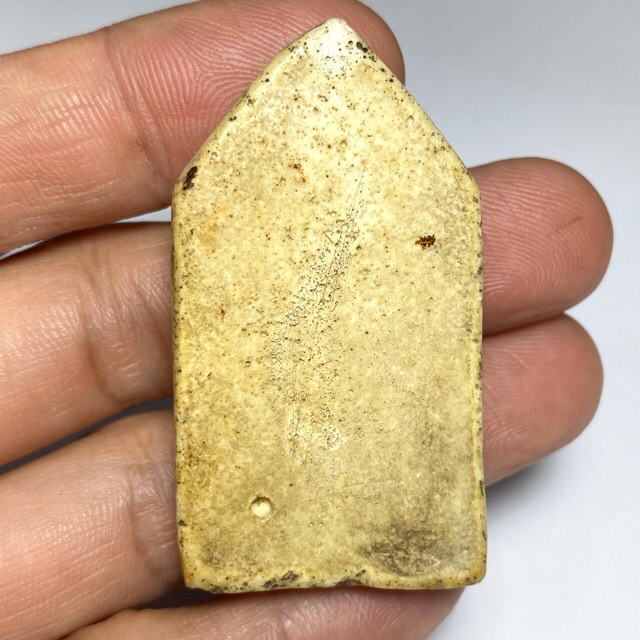
Rituals of Empowerment
Luang Por Guay’s methods of Pluk Sek (amulet empowerment) were remarkably intricate. He conducted daily ceremonies at dawn, morning, midday, afternoon, evening and midnight, aligning each rite with auspicious Reuks—including Mongkol (astrological), Jone (gangster) and Bun Paya Marn (demonic) influences—to envelop the wearer in comprehensive protection and blessing. Owners were encouraged to invoke the Kumarn Tong through dedicated kata, spoken silently in the heart when entering buildings, eating or naming the spirit. Offerings were to be made separately, rather than from one’s own plate, so that the Kumarn Tong might attract prosperity, companionship and protection, driving away adversaries and safeguarding household harmony.
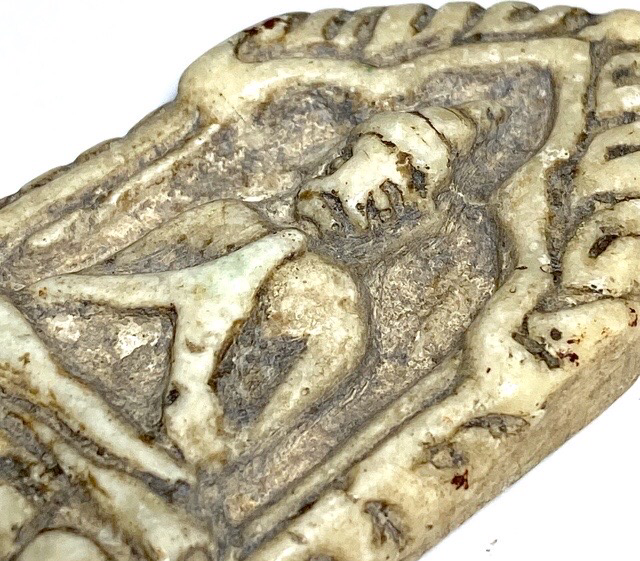
Life of Luang Por Guay
Born on November 2, 2448 B.E. in the Year of the Snake, Luang Por Guay demonstrated precocious mastery of the Dhammapada and Pali incantations long before his ordination at age seven under Luang Por Khuad. Elevated to abbot of Wat Ban Kae on September 1, 2491 B.E., he adopted a life-style of simplicity and austerity, restricting himself to a single daily meal to empathize with the impoverished villagers he served. Renowned for his healing ministrations, daily empowerments of amulets and mastery of multiple wicha—including Sak Yant tattooing—he forged a legacy of both spiritual and material support for his community.
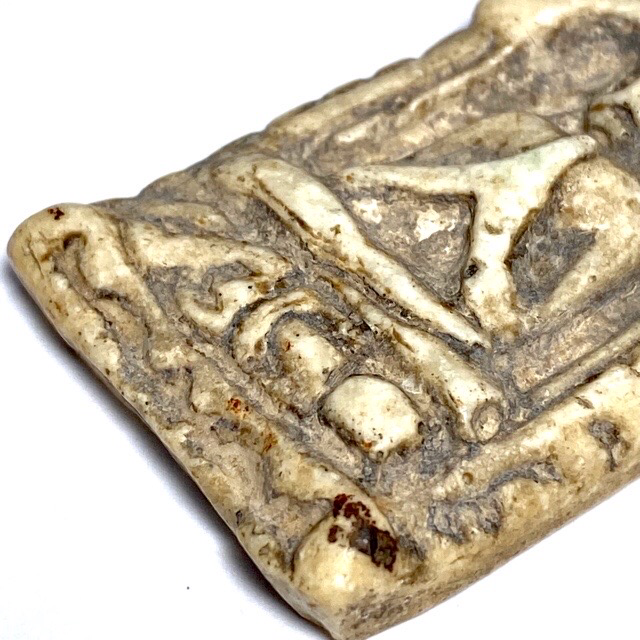
Final Years and Posthumous Reverence
In April 2522 B.E., after a prolonged illness attributed to years of self-denial in sustenance, Luang Por Guay passed away in peaceful repose at age seventy-five. His final days were marked by continued magical labor, as he inscribed yantra on palm and foil, empowered amulets by midnight rituals and even foretold the moment of his own departure. When he breathed his last, the temple bell fell as though in salute, tolling exactly at 7:55 a.m. on April 12. Each year since, devotees assemble at Wat Kositaram to offer reverence on that date, calling upon his enduring blessings and celebrating the profound potency of his amulets.
Luang Por Guay (Wat Kositaram)
Luang Por Guay was born on 2nd of November 2448 in the year of the snake, in Soi 9, Ban Kae , Tambon Bang Khud, Sakburi, Chainat He passed away in 2522 BE Under Miraculous Circumstances; Click Here to Read Full Biography of Luang Por Guay Wat Kositaram
